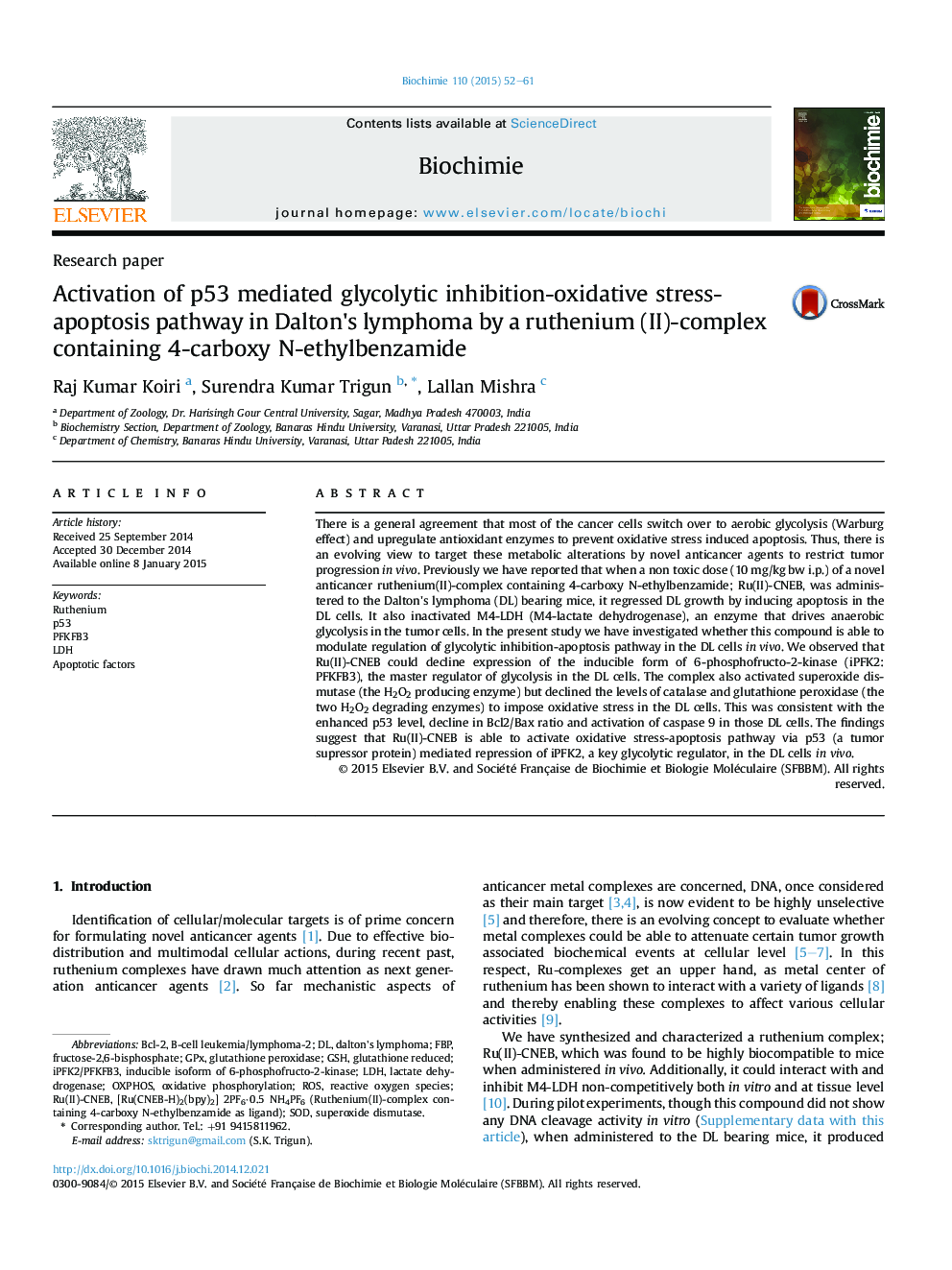| کد مقاله | کد نشریه | سال انتشار | مقاله انگلیسی | نسخه تمام متن |
|---|---|---|---|---|
| 1952060 | 1538421 | 2015 | 10 صفحه PDF | دانلود رایگان |

• Ru(II)-CNEB modulates tumor biochemistry in Dalton's lymphoma (DL) bearing mice.
• Declines a key glycolytic regulator iPFK2 and enhances p53 level in the DL cells.
• Modulates the main antioxidant enzymes to enhance ROS level in the DL cells.
• Concomitantly, activates pro-apoptotic factors in those DL cells.
• Thus, activates p53 - biochemical aberrations - apoptosis pathway in the DL cells.
There is a general agreement that most of the cancer cells switch over to aerobic glycolysis (Warburg effect) and upregulate antioxidant enzymes to prevent oxidative stress induced apoptosis. Thus, there is an evolving view to target these metabolic alterations by novel anticancer agents to restrict tumor progression in vivo. Previously we have reported that when a non toxic dose (10 mg/kg bw i.p.) of a novel anticancer ruthenium(II)-complex containing 4-carboxy N-ethylbenzamide; Ru(II)-CNEB, was administered to the Dalton's lymphoma (DL) bearing mice, it regressed DL growth by inducing apoptosis in the DL cells. It also inactivated M4-LDH (M4-lactate dehydrogenase), an enzyme that drives anaerobic glycolysis in the tumor cells. In the present study we have investigated whether this compound is able to modulate regulation of glycolytic inhibition-apoptosis pathway in the DL cells in vivo. We observed that Ru(II)-CNEB could decline expression of the inducible form of 6-phosphofructo-2-kinase (iPFK2: PFKFB3), the master regulator of glycolysis in the DL cells. The complex also activated superoxide dismutase (the H2O2 producing enzyme) but declined the levels of catalase and glutathione peroxidase (the two H2O2 degrading enzymes) to impose oxidative stress in the DL cells. This was consistent with the enhanced p53 level, decline in Bcl2/Bax ratio and activation of caspase 9 in those DL cells. The findings suggest that Ru(II)-CNEB is able to activate oxidative stress-apoptosis pathway via p53 (a tumor supressor protein) mediated repression of iPFK2, a key glycolytic regulator, in the DL cells in vivo.
Figure optionsDownload high-quality image (118 K)Download as PowerPoint slide
Journal: Biochimie - Volume 110, March 2015, Pages 52–61